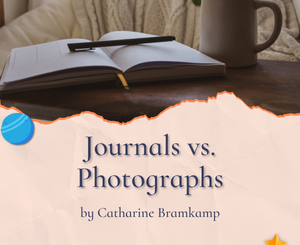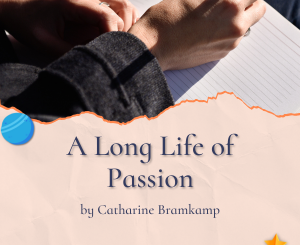Shakespeare the Brand by Catharine Bramkamp
 Let’s welcome back monthly columnist Catharine Bramkamp as she shares with us “Shakespeare the Brand.” Enjoy!
Let’s welcome back monthly columnist Catharine Bramkamp as she shares with us “Shakespeare the Brand.” Enjoy!
***
In honor of my annual pilgrimage to the Oregon Shakespeare Festival, I offer the absolute joy and frustration of Shakespeare.
Shakespeare is everywhere: in the Park, at festivals, at Renaissance Fairs. We visit his shrines, we study his work. And we debate.
Writing about who wrote Shakespeare’s plays is as popular as staging them.
The controversy that swirls around the author of those plays is itself an industry, and a contentious one at that.
As writers, we can’t help noticing the Bard left little in the way of drafts, notes, napkins, scribbles in the margins of Johnson’s script. For a man who produced 38 plays and 154 sonnets, there is little to no evidence of his process which has engendered 400 years of cheerful speculation with only the plays themselves as evidence.
But the plays are also a problem, a handful of his plays were published in Shakespeare’s lifetime but ended up quite different by the time they made it into the First Folio.
So who was Shakespeare?
More to the point, who do we think he was?
William Shakespeare’s Life
The traditional and widely accepted view is that William Shakespeare, the Stratford-upon-Avon-born actor, playwright, and poet, was indeed the author of the works attributed to him.
This view is supported by historical documents, including official records and contemporary accounts, linking Shakespeare to the plays and poems.
However, William Shakespeare’s formal education is often cited as a weakness in the argument for his authorship.
Critics argue that his modest education in grammar school would not have provided him with the breadth of knowledge, linguistic skill, and familiarity with courtly life and foreign languages reflected in his works.
Nor would his background support the number of references to classical literature, history, mythology, and foreign languages found in his plays.
Bertram Fields who wrote Players, the Mysterious Identity of William Shakespeare argues that given Shakespeare’s propensities as well as his lack of education and social status, it is more than reasonable to attribute plays like Othello and Macbeth to Edward de Vere, the Earl of Oxford.
This theory postulates that Oxford wrote the plays and the actor and front of the house man, Shakespeare, edited the final version to better appeal to audiences.
Shakespeare as the script doctor and producer.
The Oxfordian View
Continuing with the Oxfordian view, perhaps Oxford in turn gathered information, setting details, and history from a whole group of contributors, like the process for the OED.
For instance, Oxford’s son in law, Lord Stanley, could have reported about the court of Navarre, the setting for Love’s Labour’s Lost.
After Oxford’s death, Lord Stanley organized a group of writers to finish some of Oxford’s plays and get them performed: like Measure for Measure, Othello and Macbeth.
“Oxfordians were more open to the idea of collaboration. Oxford has surrounded himself with other writers – employed them as his secretaries, financed them, and even housed them.” George Greenwood suspected that the plays were the work of “many pens and one Master Mind.” (Elizabeth Winkler, Shakespeare was a Woman and other Heresies).
Let’s talk about Renaissance women. There is growing speculation that women contributed to the Shakespeare plays.
Mary Sidney
“Mary Sidney (Countess of Pembroke) was first proposed as an authorship candidate in Gilbert Slater’s Seven Shakespeares(1931). Slater through some of the plays “showed Feminine rather than masculine intuition” and suspected that unruly Rosalind… was a self portrait of the authoress” He conceived as Mary Sidney as a collaborator in a group of writers led by Oxford.” (Elizabeth Winkler)
Sidney produced her own work, publishing The Tragedy of Antonie, a French translation, making her the first woman to publish a play in English. It’s thought to have influenced Anthony and Cleopatra.
Scholar Margaret Hannay, noted that much of what Sidney wrote and translated has disappeared.
The outstanding question, did she influence or contribute to Shakespeare’s plays?
Carol Symes, historian at University of Illinois commented that “This is one of those things that’s probably always going to be unprovable precisely because of the undocumented nature of women’s work”.
She feels that it’s almost impossible to contract all this knowledge and experience into one person, one writer.
Just because we don’t have their names on the works doesn’t mean the women weren’t writing. even performing during the 17th century.
As Virginia Woolf commented – Anon was probably a woman.
Shakespeare the Theater Producer
If Shakespeare was the theater producer, the man with the final say over performances and scripts, his could well be simply the last name on the works, which includes the theory that Shakespeare bought the plays of Thomas North and produced them under the Shakespeare name.
When I proposed this idea of collaboration rather than a solo genius, I did not get much push back, the plays stand, and collaboration makes sense.
However, the myth of a single genius is difficult to shake.
There is a treasured belief that Genius comes from nothing, a gift from the Gods.
Which is a lie, genius is actually developed and nurtured by privileged education and exclusive opportunities.
Admitting to collaboration is to denigrate Shakespeare as God, or more importantly, the British God.
God or not, we enjoy the plays for what they are – magnificent – genius – human.
New Book! 3 in the Sexy @ Sixty Series – Sunk Cost.
***
Want to read more articles like this one Writer’s Fun Zone? Subscribe here.
***
ABOUT THE AUTHOR
 Catharine Bramkamp is a successful writing coach, Chief Storytelling Officer, former co-producer of Newbie Writers Podcast, and author of a dozen books including the Real Estate Diva Mysteries series, and The Future Girls series. She holds two degrees in English and is an adjunct university professor. After fracturing her wrist, she has figured out there is very little she is able to do with one hand tied behind her back. She delights in inspiring her readers.
Catharine Bramkamp is a successful writing coach, Chief Storytelling Officer, former co-producer of Newbie Writers Podcast, and author of a dozen books including the Real Estate Diva Mysteries series, and The Future Girls series. She holds two degrees in English and is an adjunct university professor. After fracturing her wrist, she has figured out there is very little she is able to do with one hand tied behind her back. She delights in inspiring her readers.






